Have you ever desired tomatoes that are so plump, juicy, and flavorful that they burst in your mouth? Growing perfect tomatoes requires some knowledge and dedication, but with the help of Neem oil, it’s possible to have the best crop. Neem oil is a natural pesticide derived from the seeds of an Indian tree. When used correctly, it can provide numerous benefits to tomato plants including improved growth and flowering, disease control, and help with insect control. Learn how to use Neem Oil on Tomato plants for maximum yields!
Active compounds in neem oil
Neem oil contains several active compounds that are responsible for its insecticidal, antifungal, and medicinal properties. The main components are:
- Azadirachtin – This is the most powerful compound in neem oil, and it acts as an effective natural insecticide. It disrupts the growth cycle of insects and prevents them from reproducing or feeding on plants.
- Nimbin – This compound has anti-inflammatory, analgesic, and antipyretic properties. It is also known to possess antibiotic activity against many bacterial species.
- Salannin – This compound exhibits strong insecticidal activity and can be used as a natural pesticide. It is especially effective against aphids, whiteflies, and other soft-bodied insects.
- Nimbidin – This compound has antifungal properties and can be used to control fungal diseases such as powdery mildew and rust.
- Quercetin – This compound is known to have antioxidant activity and can help protect plants from oxidative damage caused by climate change or environmental stressors.
Neem oil also contains several other beneficial compounds such as terpenoids, flavonoids, glycerides, carotenoids, steroids, polysaccharides, saponins, and more.
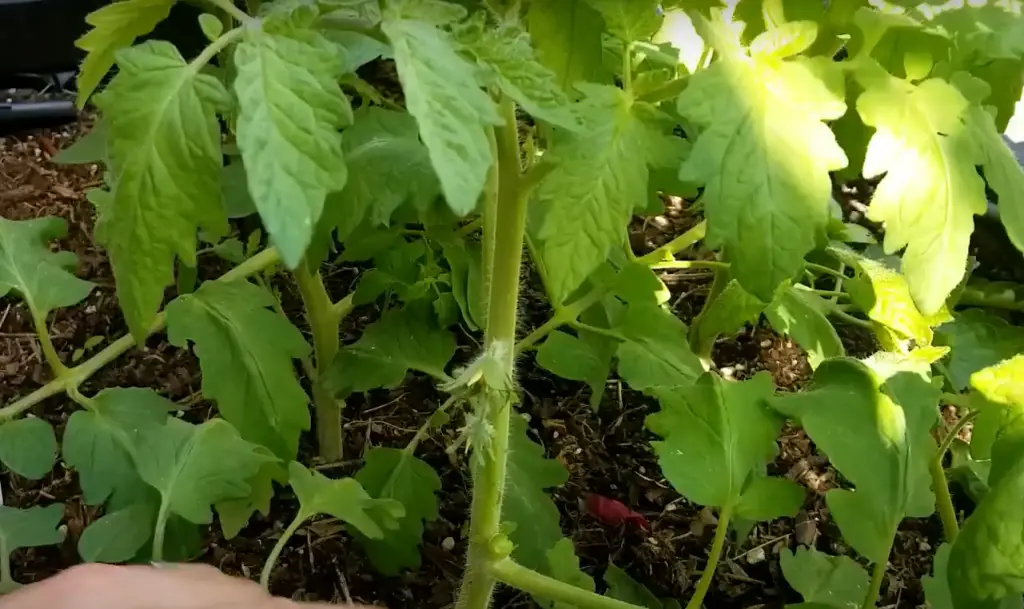
These compounds help to make neem oil a powerful natural pesticide that is safe for use around food crops and in home gardens. Additionally, neem oil can be used as a natural insect repellent to keep pests away from plants. It is also known to be effective in reducing the symptoms of certain skin conditions. Finally, neem oil is a popular ingredient in many natural and organic products due to its powerful medicinal properties [1].
Types of neem oil
Cold-pressed neem oil
Cold-pressed neem oil is the most popular form of neem oil, and it is extracted from the seeds of the neem tree using a cold-pressing process. The cold pressing process preserves the natural properties of the neem oil while creating an unrefined product that can be used in many different applications. It has a very strong odor and typically contains high levels of fatty acids, sterols, and other beneficial compounds. It can be used as a pesticide or repellent to help control insects and other pests in gardens and fields.
Hydrogenated Neem Oil
Hydrogenated neem oil is another type of neem oil that goes through an additional processing step to reduce its odor and refine its texture. The oil is heated and then combined with hydrogen molecules under pressure to achieve this result. This type of oil can be used in skincare products, soaps, and even as a cooking oil. It has a much milder odor and superior stability compared to cold-pressed neem oil.
Azadirachtin Neem Oil
Azadirachtin neem oil is a type of neem oil that contains the active ingredient azadirachtin, which is an insecticidal compound found naturally in the neem tree. This form of neem oil is effective against many types of insects and pests including mosquitoes, aphids, thrips, mites, whiteflies, beetles, weevils, and caterpillars. It can be used as a pesticide in agricultural fields or as an insecticide in homes and gardens.
Neem Essential Oil
Neem essential oil is different from the other types of neem oil mentioned above because it contains volatile compounds that are extracted through steam distillation. This type of oil has strong antiseptic properties and is often used in aromatherapy to help reduce stress and anxiety. It also has anti-inflammatory benefits, which makes it useful for skin care products such as lotions and creams.
Overall, there are several types of neem oil available on the market today, each with its own unique set of benefits and uses. From cold-pressed neem oil to azadirachtin neem oil and even essential neem oil, there is a type of neem oil that can be used to meet any need. It’s important to understand the differences between each type of oil so you can choose the one that best fits your needs.
Benefits of Using Neem Oil on Tomato Plants
Insecticide and Fungicide Properties
Neem oil is a natural insecticide and fungicide that can help protect tomato plants from serious infestations.
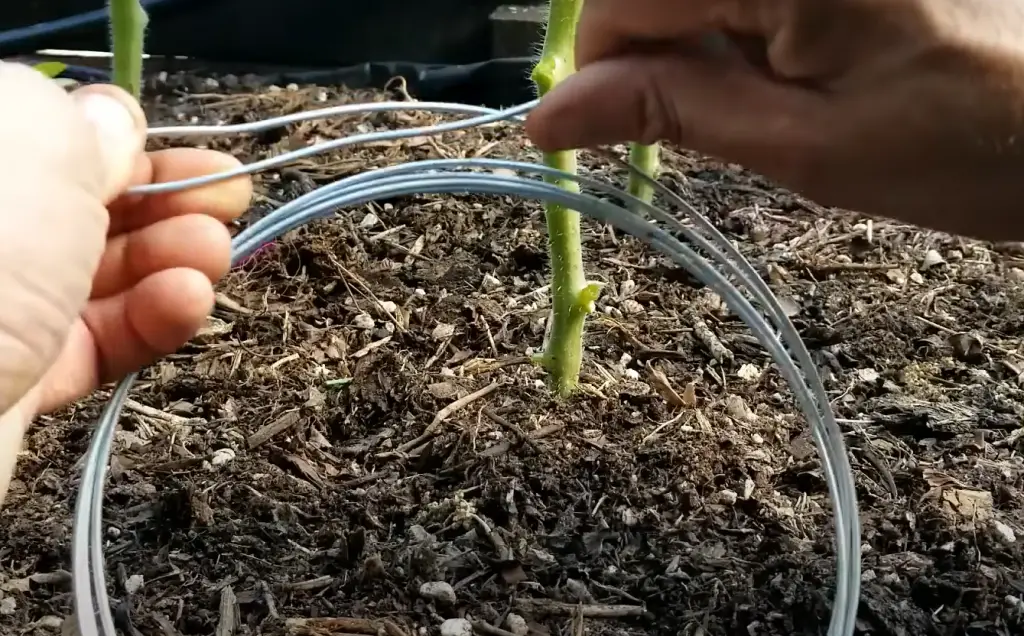
It works by interfering with the growth hormone production of insects, which ultimately prevents them from feeding on your plants. Neem oil also has fungi-fighting properties, making it an effective option for managing fungal diseases such as leaf blight and rust.
Organic Nutrient Source
In addition to its pest control benefits, neem oil can also act as an organic fertilizer for tomatoes. The oil contains high levels of fatty acids that are beneficial to plant health, including nitrogen, phosphorus, magnesium, zinc, and other essential nutrients that tomatoes need for healthy growth.
Improved Plant Resistance
By regularly spraying neem oil on tomato plants, they become more resistant to drought and other environmental stresses. This is because the oil helps strengthen the plant’s cell walls, improving its ability to withstand harsh conditions. Neem also increases a plant’s resistance against root-knot nematodes.
Enhanced Plant Growth
Neem oil has been known to improve plant growth and yield. The nutrients found in neem are essential for strong root development, proper flower production, and overall increased vigor of tomato plants. Additionally, regular applications of neem oil can help plants better absorb nutrients from the soil, promoting healthier growth over time.
Nematicide Properties
Neem oil has nematicidal properties, meaning it can be used to control harmful nematodes in the soil.
Neem oil is an effective way to reduce root-knot nematode populations around tomato plants without resorting to harsh chemical pesticides [2].Negatives of Using Neem Oil on Tomato Plants
Effect is gradual
One of the negatives of using neem oil on tomato plants is that the effects are gradual. The neem oil won’t provide an immediate solution to any pest issue, and it can take several applications over weeks or even months for it to start working effectively. This means it can be time-consuming and labor-intensive to get good results from neem oil.
May damage tomato plants
Another potential negative of using neem oil is that it may cause damage to the tomato plant itself. While this isn’t always the case, some tomatoes may become stunted in their growth or burned by contact with Neem oil, especially if applied too often or too heavily.
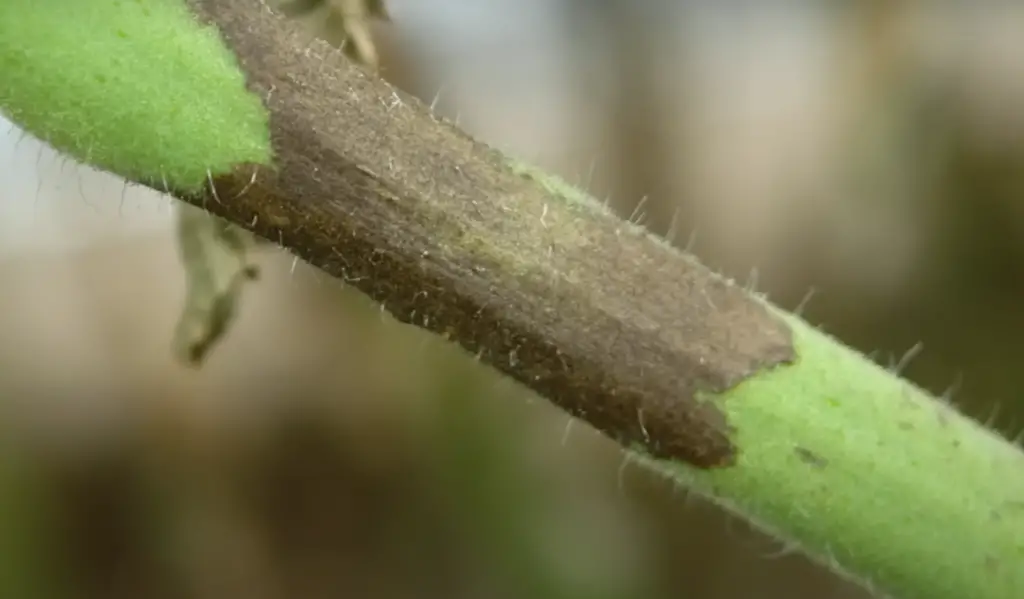
It’s important to carefully read the instructions that come with your Neem oil product and follow them closely to ensure you don’t damage your tomato plants.
Can be harmful to beneficial insects
Another potential downside of using neem oil on tomato plants is that it can be harmful to beneficial insects.It’s important to consider whether there are other non-chemical solutions available before applying Neem oil so you don’t harm beneficial species in your garden.
Requires multiple applications
Neem oil requires multiple applications to be effective. While this is a good thing in the sense that it gives you more control over pests, it also means you’ll need to invest quite a bit of time and effort into reapplying the oil regularly. This can be difficult for gardeners with limited time or resources.
It is toxic to some animals
Finally, it’s important to keep in mind that neem oil is toxic to some animals, including cats and dogs. It can also be harmful if ingested or inhaled by humans, so you should always take precautions when working with neem oil products. Wear gloves and a face mask, and keep the area well-ventilated while applying the oil.
Overall, while neem oil can be an effective way to control pests on tomato plants, there are some potential negatives associated with its use. It’s important to fully understand the pros and cons of using Neem oil before deciding if it’s right for your garden.
How to Use Neem Oil on Tomato Plants?
Using neem oil to protect tomato plants from pests and diseases is a safe, natural, and effective way of keeping your garden safe. Here are the steps for applying neem oil to tomatoes:
- Start by mixing 2 teaspoons of neem oil with 1 teaspoon of dish soap in 1 gallon (4 liters) of water.
- Stir the mixture thoroughly until it has blended completely.
- Fill a hand-held spray bottle with the solution and apply it to tomato plants until they are evenly coated but not saturated. Make sure you also get underneath the leaves and on top of the stems where pests may hide.
- Spray once every 7 to 10 days when temperatures are between 60°F (15.5°C) and 85°F (29.4°C).
- Stop spraying when temperatures reach above 90°F (32.2°C) as this can cause leaf scorch or burn the foliage of your tomato plants.
- Repeat the application every 7 to 10 days until your tomato plants are pest and disease free.
- After each use, store the neem oil solution in a cool, dark location for future use since it does not last long after exposure to sunlight or air.
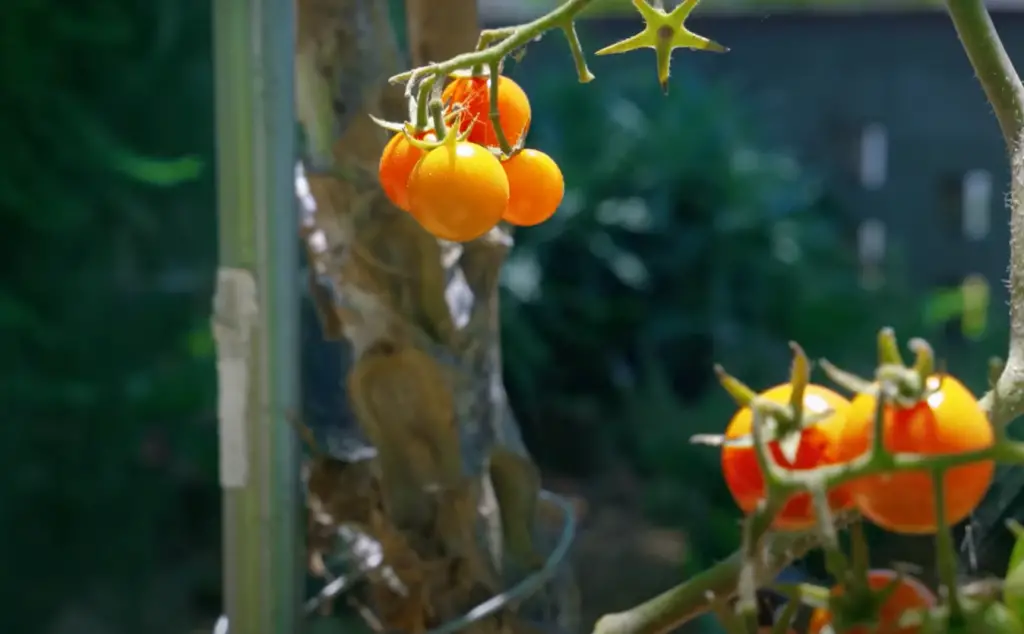
By following these steps, you will be able to successfully protect your tomato plants from pests and diseases using neem oil [3]!
How to maintain tomato plants?
To maintain a healthy and productive tomato plant, there are several steps to take.
- Water your plants regularly: Tomatoes need at least 1-2 inches of water per week for optimal health and growth; more in arid climates or during hot, dry spells. To avoid disease and maximize absorption, water the soil around the base of the plants rather than water from above (which can cause foliage or fruit to become wet).
- Provide adequate sunlight: Tomatoes need a minimum of 6-8 hours of direct sunlight per day for optimal growth; if grown indoors this must be provided via grow lights. When planting outdoors make sure your plants get enough light by monitoring their location throughout the day.
- Add mulch: Mulching your tomato plants helps to keep the soil evenly moist, encourage root growth, and reduce weeds. When adding mulch try to use organic materials such as straw or wood chips; avoid non-organic materials like plastic as they can increase the risk of disease.
- Fertilize properly: Tomatoes need regular fertilization for optimal growth; however, too much fertilizer can burn the plant’s roots and damage their health. To ensure that you fertilize correctly, always follow the instructions on the package and test the soil before applying any fertilizer.
- Prune regularly: Regular pruning helps improve air circulation around your plants and encourages new, healthy growth while reducing pest infestations. Prune off any dead or diseased branches, and remove any suckers (shoots that grow between the main stem and a branch). This will help direct energy into developing flowers and fruit.
- Monitor for pests: Tomato plants are susceptible to a variety of pests including aphids, spider mites, whiteflies, thrips, and hornworms. Regularly check your plants for signs of these pests; if found take action quickly by either hand-removing them or using an appropriate pesticide.
- Harvest regularly: When the tomatoes start ripening make sure you harvest them regularly as this will encourage new growth and provide more opportunities for harvesting throughout the season. Also, remember to avoid over-ripe fruits as they can attract pests and cause disease.
- Dispose of crop residue: After harvesting, make sure to remove any leftover fruit or foliage from the plant. This prevents harboring pests and diseases which can spread to other plants in your garden. Additionally, dispose of crop debris (such as old stems or leaves) away from your garden area to protect it from potential problems.
- Clean equipment: To prevent the spreading of pests and diseases, always clean gardening tools after use with a mild soap solution or rubbing alcohol before storing them away in a dry place. It’s also important to regularly inspect for signs of rust or damage on your tools and replace as necessary.
By following these steps you can ensure that your tomato plants stay healthy and productive throughout the growing season. Additionally, if any issues arise don’t hesitate to reach out to an experienced gardener for help.
How to choose the right tomatoes seeds
Choosing the right tomato seeds for your garden can seem daunting, but it doesn’t have to be. Tomato varieties are plentiful and selecting one that suits your needs is straightforward if you know what to look for. Here are a few tips on how to choose the right tomato seeds:
- Consider the climate when choosing tomato seeds. Growing tomatoes in different climates requires different types of tomato varieties that are better suited to the climate. For example, hot climates require more heat-tolerant varieties while cold climates may need cooler-season varieties.
- Decide on the size and shape when picking tomato seeds. Do you want cherry tomatoes, beefsteak tomatoes, or heirloom tomatoes? Cherry tomatoes generally produce an abundance of fruit while beefsteak tomatoes produce larger fruits. Heirloom tomatoes are open-pollinated varieties that have been around for generations and have unique colors, shapes, and flavors.
- Consider disease resistance when selecting tomato seeds as many modern varieties have built-in protection from common tomato diseases like wilt, blight, and cracking.
- Choose the right color for your needs – tomatoes range in color from yellow to purple to green to orange. Some of these colors may be better suited to specific dishes or recipes you plan on making with your harvest.
- Look at the size of each variety before purchasing seeds – some plants may take up a lot of space while others are more compact and suitable for container gardening or smaller gardens.
- Investigate the disease resistance of different varieties – some tomato varieties are bred to be resistant to certain diseases, such as late blight or fusarium wilt.
- Check out flavor profiles and reviews – tomatoes come in a variety of flavors and textures, including sweet, tart, acidic, and meaty. Reading reviews from gardeners can help you decide if a particular variety will suit your taste buds.
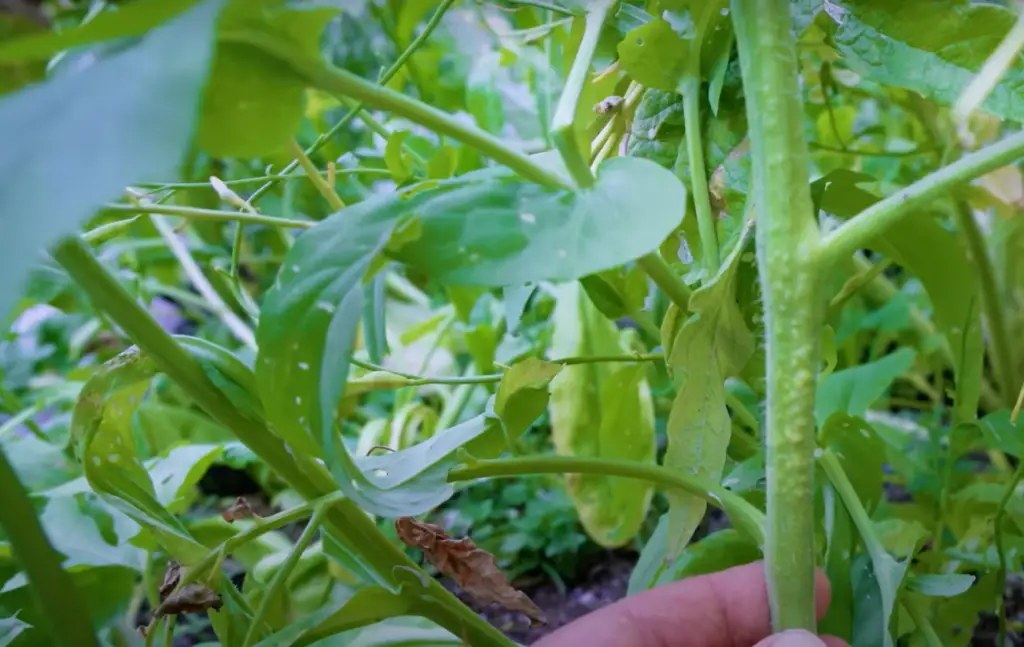
By considering these factors when selecting tomato seeds, you’ll be sure to choose the right ones for your garden!
FAQ
Can I spray neem oil on my tomato plants?
Yes, you can spray neem oil on your tomato plants. Neem oil is a natural pesticide that helps to keep pests away and also provides some nutrients for the plant. It should be applied early in the morning or late in the evening when temperatures are cooler, and it should only be sprayed onto the leaves of the plant – not directly into the soil. Make sure to read all instructions on how to properly mix and apply neem oil before using it. Additionally, avoid spraying during periods of high humidity or direct sunlight as this could damage your plants.
Should you spray neem oil before or after watering?
It is best to spray neem oil before watering. Applying it after heavy rain or irrigation can wash some of the product away and reduce its effectiveness. Additionally, spraying directly onto wet leaves can cause leaf burn and other damage to your plants. Apply neem oil when the soil is dry so that it has time to penetrate through the plant’s foliage and reach any pests hiding beneath the leaves. Make sure to read all instructions on how to properly mix and apply neem oil before using it.
How often should I spray neem oil?
The frequency of application depends on what type of pest you are trying to control with neem oil, as well as environmental factors such as temperature and humidity levels. Generally speaking, for most pests, neem oil should be sprayed every 7-10 days. However, in areas with high humidity or temperatures above 85 degrees Fahrenheit, you may need to spray more frequently. Be sure to read all instructions on how to properly mix and apply neem oil before using it.
What are the side effects of neem oil?
Neem oil is generally considered safe for humans and animals when used correctly, but there can be some adverse reactions if applied excessively or without following directions. For example, skin irritation may occur if it comes into contact with the skin in large amounts. Additionally, inhalation of neem oil vapors can cause respiratory issues such as coughing and wheezing. Make sure to read all instructions on how to properly mix and apply neem oil before using it.
Can I use neem oil on other plants?
Yes, neem oil can be used on a variety of different plants, including vegetables, fruits, flowers, and trees. Neem oil is an effective natural pesticide that helps to keep pests away and also provides some nutrients for the plant. Make sure to read all instructions on how to properly mix and apply neem oil before using it. Additionally, avoid spraying during periods of high humidity or direct sunlight as this could damage your plants.
Is neem oil safe for bees?
Neem oil is thought to be safe for bees when applied correctly in small amounts. However, large doses or improper application can cause harm to bee populations.
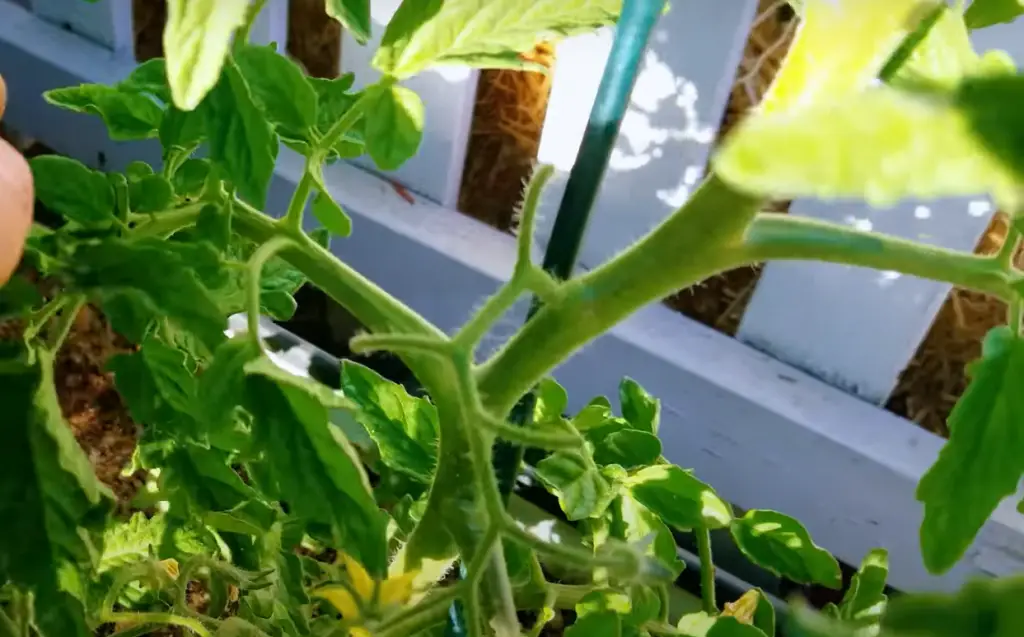
Additionally, neem oil should not be sprayed onto blooming flowers as this can cause problems for pollinators and other beneficial insects. Make sure to read all instructions on how to properly mix and apply neem oil before using it.
What is the best way to spray neem oil on plants?
The best way to spray neem oil on plants is to mix it with water and use a spray bottle or garden sprayer.
Make sure to read all instructions on how to properly mix and apply neem oil before using it. Additionally, avoid spraying during periods of high humidity or direct sunlight as this could damage your plants.Can I use neem oil as a fertilizer?
Yes, neem oil can be used as an organic fertilizer for your plants. Its natural compounds are rich in nitrogen and other essential nutrients that help promote healthy plant growth. However, it should not be used as the sole source of nutrition – it should be used to supplement regular fertilizer. Make sure to read all instructions on how to properly mix and apply neem oil before using it.
Is neem oil safe for aquatic life?
Generally speaking, neem oil is not considered harmful to aquatic life when used in small amounts and mixed correctly with water. However, large doses or improper application can cause harm to fish, frogs, and other aquatic organisms. Make sure to read all instructions on how to properly mix and apply neem oil before using it. Additionally, avoid spraying any areas near bodies of water as this could contaminate the water source.
How soon can I harvest my tomatoes after applying neem oil?
Typically, you should wait at least 1-2 days after applying neem oil before harvesting your tomatoes.
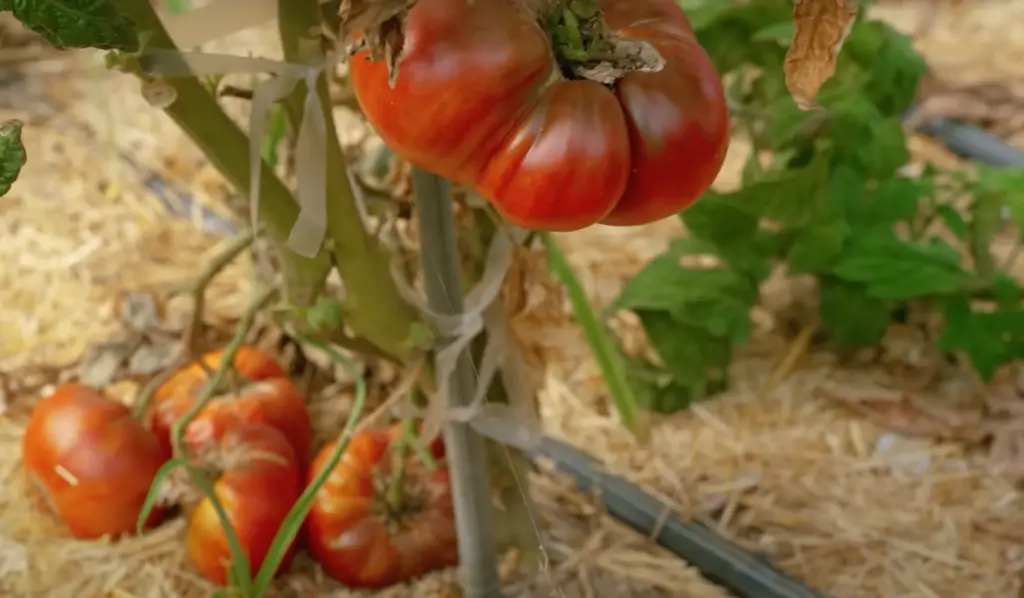
This will give the oil time to soak into the plants and take effect, as well as allow any residues on the surface of the plant to dry off.
Neem oil burned my leaves, what happened?
If neem oil was applied in too high of a concentration or during periods of direct sunlight, it can cause leaf burn. This is why it’s important to read all instructions on how to properly mix and apply neem oil before using it. Additionally, avoid spraying during periods of high humidity or direct sunlight as this could damage your plants.
Useful Video: Tomato Pests & Diseases and How to Fix Them With Organic Solutions
Conclusion
Using neem oil on tomato plants can be a great way to protect them from pests and diseases. It is an all-natural solution that can be made at home, providing a safe and effective means of controlling pests without harming the environment. Additionally, neem oil has multiple other benefits including acting as a natural fertilizer for your tomatoes and helping to reduce moisture loss in the soil. Therefore, if you are looking for an easy and affordable way to protect your tomato plants from insects and disease, using neem oil could be a perfect choice!
References:
- https://www.frontiersin.org/articles/10.3389/fpls.2016.01494/full
- https://gardentipsforall.com/benefits-of-neem-oil-for-tomatoes/
- https://gardeningisgreat.com/neem-oil-on-tomato-plants/






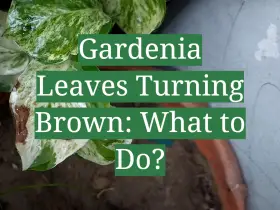

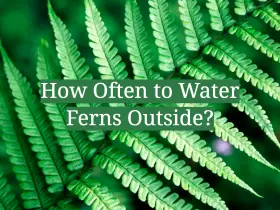
Leave a Reply
View Comments